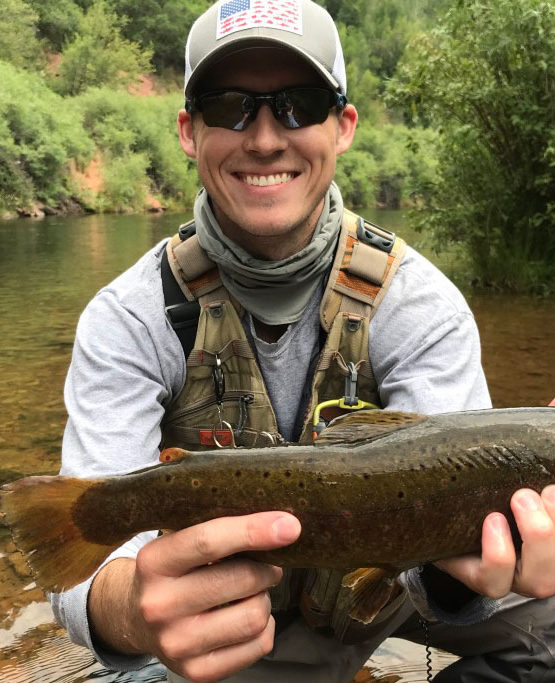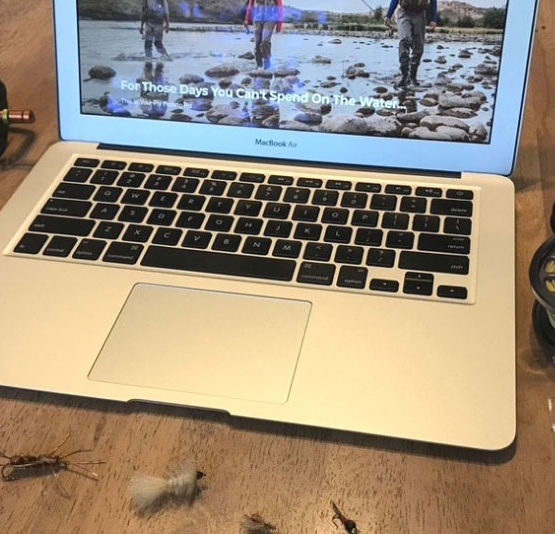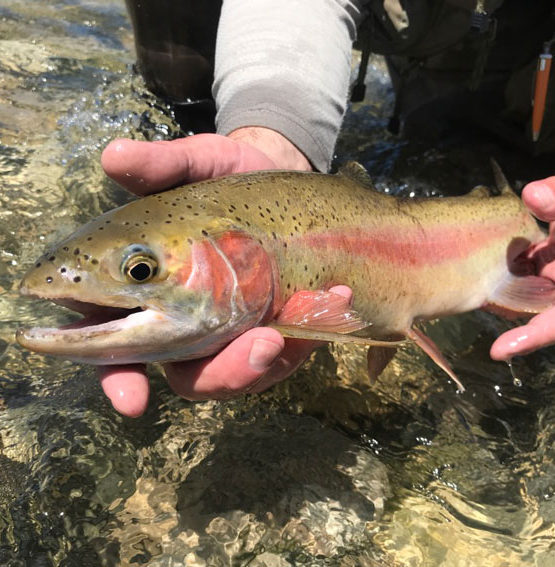When you are out fly fishing, do you struggle to tell what trout are eating? Well, don’t feel bad, because you are in the same boat as every other angler…ever. I don’t care if you are an absolute beginner, or a seasoned vet, the most difficult task in fly fishing is figuring out what to put on the end of your line. So how do you tell what trout are eating?
If you can see trout taking dry flies off the water’s surface, then all you have to do is “match the hatch”. However, if you don’t see trout surfacing, you still have a number of other options. For example, you can seine the water, check the water’s plant life and rocks, fish with multiple flies, or even pump a trout’s stomach.
With all that in mind, it’s important to remember the following: catching trout on a fly rod is more complicated than just figuring out what the fish are eating. You can pick the perfect fly all day long, but if you don’t know how to set up your rig, control your depth, make a good cast, maintain a good drift, and set a proper hook, then you will still struggle to catch fish.
That said, if you’ve got all those things figured out, it does make things easier if you can give the fish what they want.
So, In this guide, I am going to cover the 5 best ways to tell what trout are eating. As an experienced angler, I use these methods consistently, and in most situations, they work wonders.
Let’s get right to it!
Disclaimer: This post may contain affiliate links, meaning we will receive a small commission (at no cost to you) if you click through and make a purchase.1. Seine The Water
About 5 years ago I spent $25 on a seine that attaches to my net, and it was some of the best money I have ever spent as a fly fisherman. Seriously, if you want to spend your day catching fish instead of guessing what fly pattern you should tie on next, then you should get one too.
In my experience, using a seine is the simplest, and most effective way to figure out what trout are eating.
If you’ve never used one, I recommend the Quick-Seine. This thing conveniently tucks away into a little pack you attach to your net, so you don’t have to carry a seine in your vest or pack all day. All you have to do is pull it up over your net, dip it in the water, and boom, you know what’s on the menu for the trout that day. Afterwards, you just tuck it back into it’s self-contained pouch, and move on with your life. It’s about as convenient as it gets, and it makes figuring out what fish are eating as simple as it can possibly be.
I use a seine at the start of every fishing trip, which on many occasions leads to a fish on my very first cast.
Related Articles:
- How To Tie A Dry Dropper Rig (5 Simple Steps)
- How To Hold A Trout For Photos
- 25 Proven Tips To Catch More Trout
- 21 Common Fly Fishing Mistakes To Avoid
- How To Tie A Double Nymph Rig? A Step-By-Step Guide
- 25 Tips For Fly Fishing Small Streams And Creeks
2. Check The Rocks And Plants
If you don’t have a Quick-Seine, the second-best option for figuring out what trout are eating is to pick some rocks or plant out of the water, and look for life.
If you’ve never done this, you’ll be amazed at how many little nymphs and annelids live underwater. In fact, the biggest problem with this method, is that sometimes there are so many different species of insects that it can be hard to choose a single one.
Additionally, if you are in a river known to have a large population of caddis, you will probably see thousands of little caddis shucks covering every rock you pick up. In my experience, these can be a little misleading.
You see, the thing about caddis shucks is that they are basically glued to the rocks. So, even though there are thousands of them, there might not be many actually floating down the river for the fish to eat. With that in mind, when you pull a rock, plant or stick out of the water to figure out what the trout are eating, focus on the bugs that are most likely to be floating in the water.
3. Fish With Multiple Flies
No matter what, if you can’t tell what the fish are eating, you should be fishing with multiple flies. It’s really simple math. If you fish with one fly at a time, then you only have one opportunity to catch fish. So, why not double your odds, and fish with two flies? Or, if you are a little more advanced, why not try fishing with three flies?
Truthfully, I can’t remember the last time I used a single-fly rig. The way I see it, I’m out there to catch fish, so I’m not going to limit my opportunities.
4. Pump A Fish’s Stomach
If you have tried everything else on this list, and you still can’t tell what the fish are eating, then you may have to resort to pumping a trout’s stomach. Now, the biggest flaw with this method is that in order to pump a fish’s stomach, you actually have to catch a fish in the first place.
So, if you haven’t caught anything, then this is right out.
However, if you are having a particularly slow day on the water, and you happen into a fish, it might be worth it.
That said, of all the methods you can use to figure out what trout are feeding on, this is my least favorite. Seeing how we anglers spend so much time and effort trying to protect trout and conserve their habitat, it never feels quite right to stick a tube down a fish’s throat so you can suck out its breakfast. So, if you have the patience to just keep seining the water, looking at rocks, and testing new flies, that is the more noble option.
Then again, when you wake up at 3 AM, drive 4 hours to your fishing destination, and spend 7 straight hours casting to catch a single fish, I wouldn’t judge you for jamming a pump down that cute little trout’s gullet.
Just don’t make this your first option. That’s not cool.
5. Understand The Feeding Behavior Of Trout
If you want to increase your chances of catching trout, then it is important to understand their feeding behavior. You see, trout behave in certain ways when they are feeding on certain flies.
Here are a few things to look for:
- If you see trout jumping completely out of the water, in most cases, they aren’t hitting dry flies. Rather, they are actually hitting emergers just below the surface. The reason they come out of the water is because they overestimate how fast they need to swim. So, if you’re unsuccessfully casting a dry fly to jumping trout, you should actually try fishing an emerger instead.
- If you see trout gently sipping the surface of the water, then it’s time to match the hatch. You are about to experience some dry fly action.
- If you can see trout beneath the surface, darting around, or moving side-to-side, then get out your sein or check the rocks and plant life. This is how fish behave when they are feeding beneath the surface, so it’s time to serve up some nymphs.
Summary
In fly fishing, one of the hardest, and most important things you need to do is figure out what the trout are eating. In this guide we covered 5 of the best ways to do just that.
To Review:
- Seine the water (We recommend a Quick-Seine for this method)
- Check the rocks and plants
- Fish with multiple flies
- Pump the fish’s stomach
- Understand the feeding behavior of trout
If you employ these tactics, you will have a much easier time determining which flies to use. So, next time you’re out on the water, give them a try. And be sure to let us know how it goes!
Also, if you haven’t already, you should subscribe to Fly Fishing Fix right now! I mean, we only ever talk about fly fishing. Do you really need more convincing than that?
Subscribe To Fly Fishing Fix!










